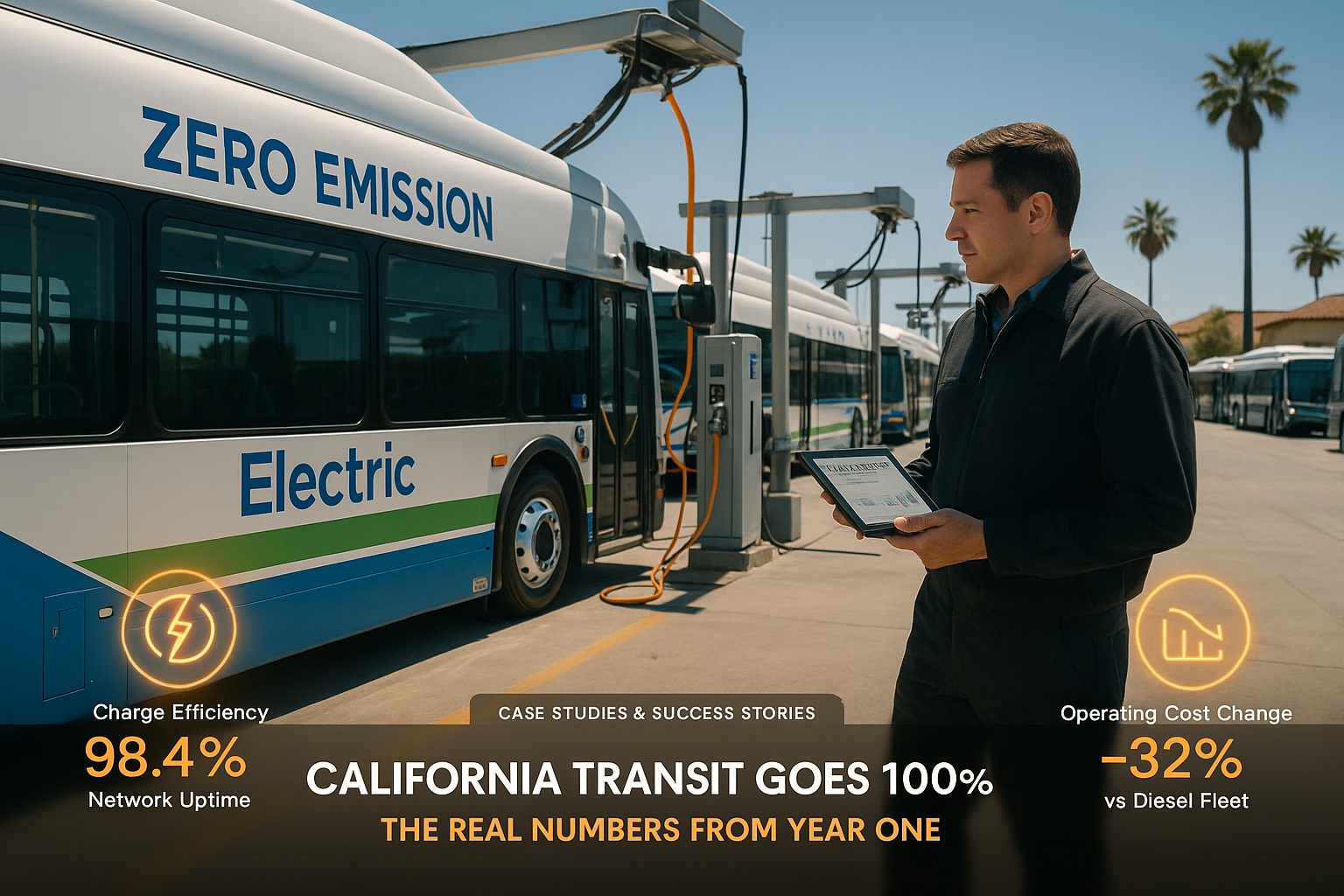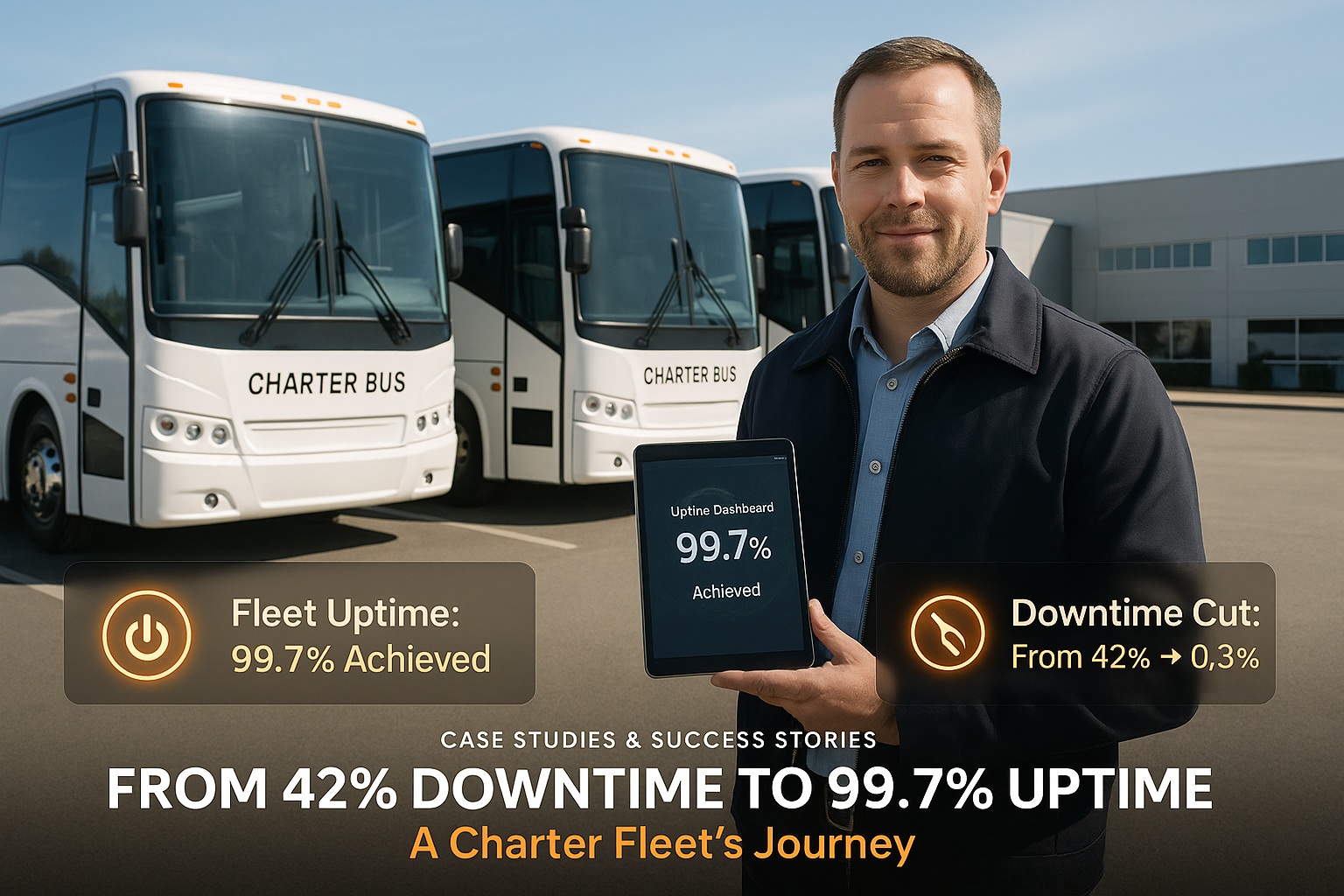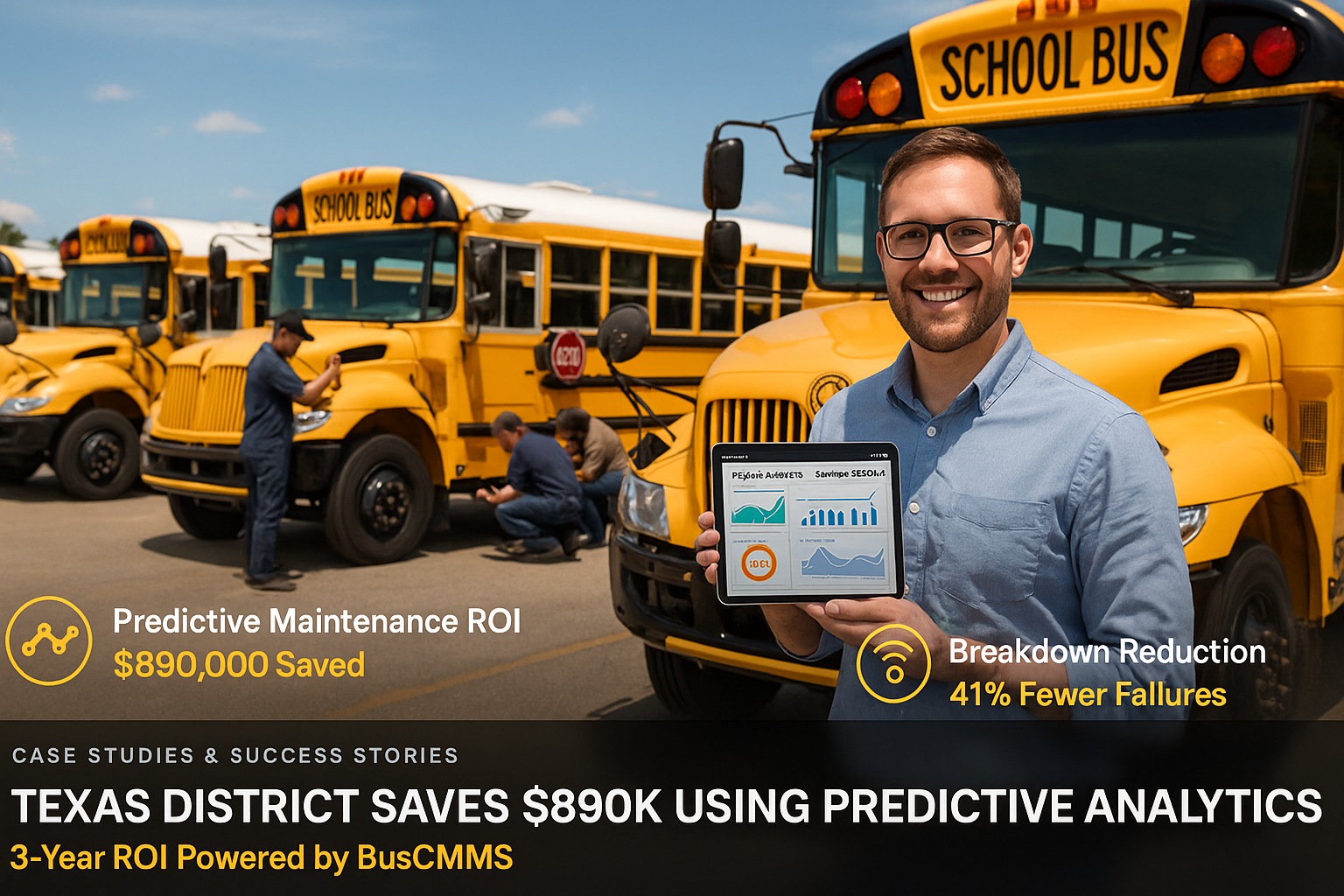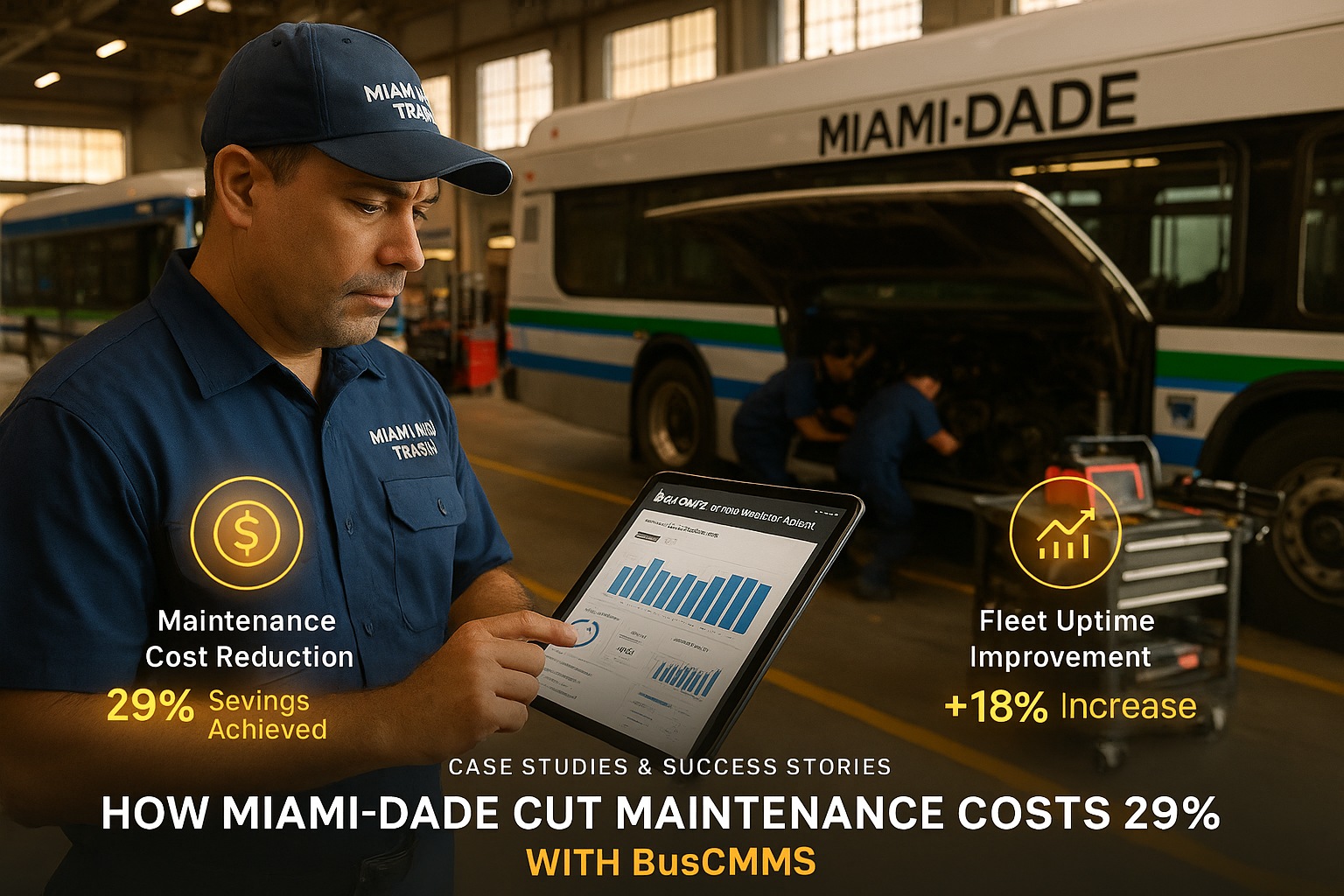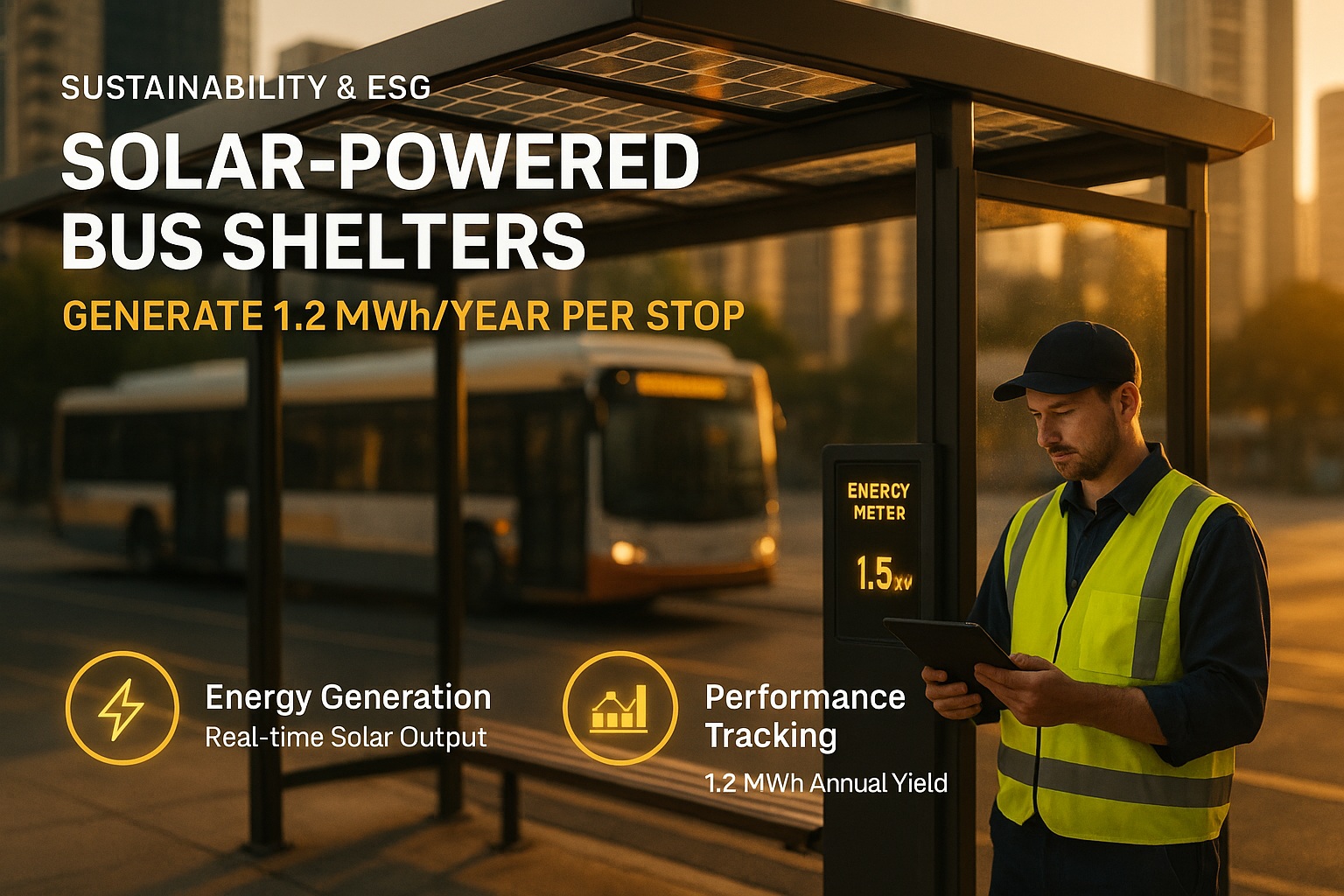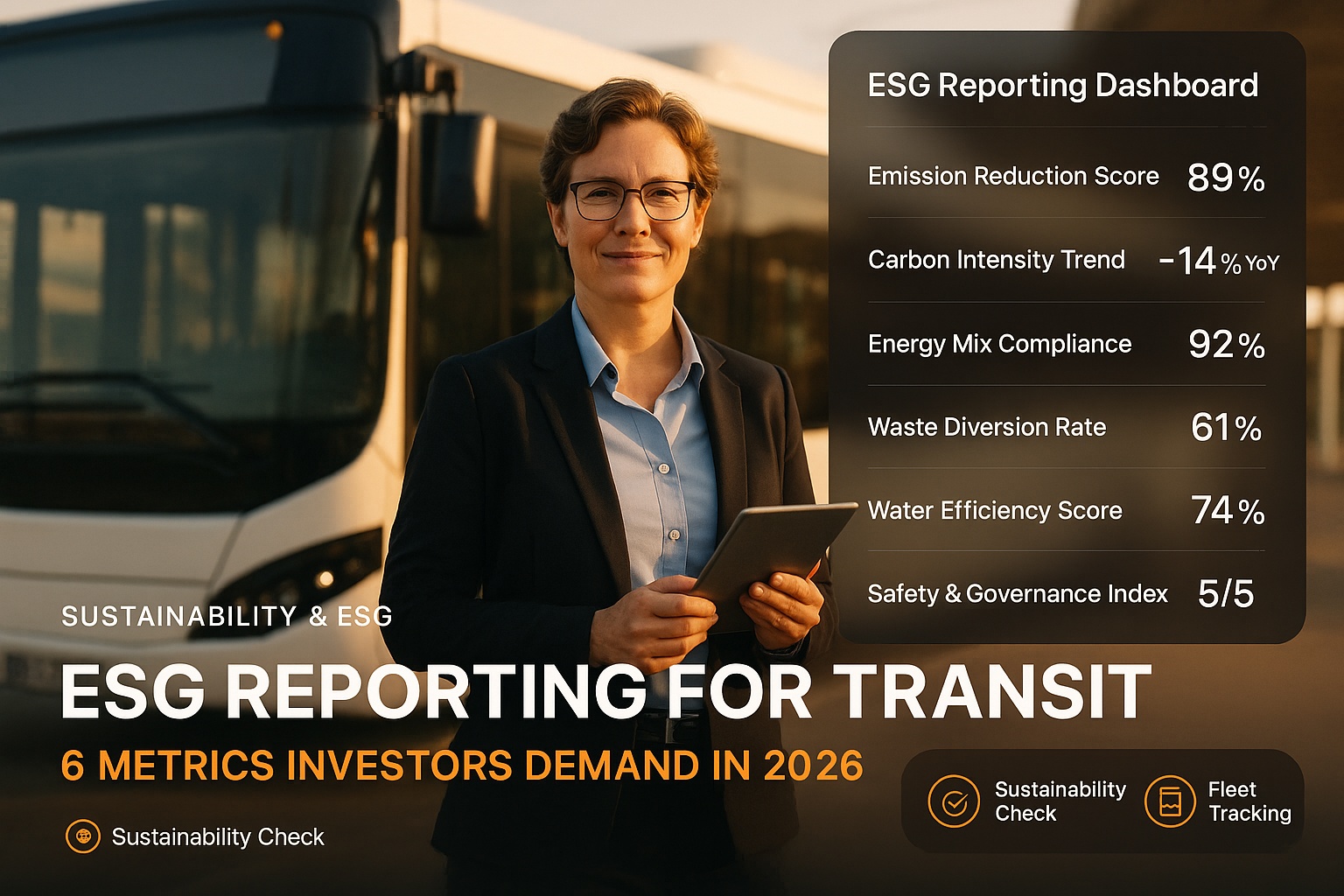In today's competitive manufacturing landscape, US companies operating bus fleets face mounting pressure to optimize operations while controlling costs. Traditional reactive maintenance approaches are giving way to sophisticated AI-powered predictive maintenance solutions that promise to revolutionize fleet management. This comprehensive guide explores how artificial intelligence is transforming bus fleet maintenance, offering manufacturing professionals the insights needed to make informed technology investments.
What is AI Predictive Maintenance for Bus Fleets?
AI predictive maintenance represents a paradigm shift from traditional maintenance schedules to data-driven, intelligent maintenance strategies. Unlike conventional approaches that rely on predetermined intervals or reactive repairs after breakdowns, AI predictive maintenance continuously monitors vehicle systems using advanced sensors, machine learning algorithms and real-time data analytics.
For US manufacturing companies, this technology leverages Internet of Things (IoT) sensors installed throughout bus fleets to collect data on engine performance, brake wear, transmission health, and dozens of other critical components. Machine learning algorithms analyze this data to identify patterns, anomalies, and early warning signs of potential failures, enabling maintenance teams to address issues before they result in costly breakdowns or safety incidents.
The technology integrates seamlessly with existing fleet management systems, providing real-time insights that can reduce unplanned downtime by up to 50% while extending vehicle lifespans and improving overall operational efficiency. Ready to see how this works in action? Schedule a live demo to explore the platform.
Key Benefits of AI-Powered Predictive Maintenance
Manufacturing professionals implementing AI predictive maintenance solutions typically experience transformative improvements across multiple operational areas. The financial impact alone justifies the investment for most US companies, with studies showing average ROI of 300-500% within the first two years of implementation.
- Dramatic Cost Reduction: Predictive maintenance reduces overall maintenance costs by 25-30% through optimized parts inventory, reduced emergency repairs and extended component lifecycles.
- Enhanced Safety Compliance: Proactive identification of safety-critical issues helps maintain DOT compliance and reduces liability exposure for manufacturing companies.
- Improved Fleet Utilization: Reduced downtime and scheduled maintenance windows maximize vehicle availability for production support and logistics operations.
- Data-Driven Decision Making: Comprehensive analytics provide insights for fleet replacement planning, route optimization, and operational improvements.
- Environmental Benefits: Optimized maintenance schedules improve fuel efficiency and reduce emissions, supporting corporate sustainability initiatives.
Want to experience these benefits firsthand? Get started with predictive maintenance today and transform your fleet operations.
Ready to Transform Your Fleet Operations?
Discover how AI predictive maintenance can cut total fleet costs by up to 30%—with fewer breakdowns, higher uptime, and safer operations.
Start Predictive Maintenance See a Live DemoEssential Features to Look For
When evaluating AI predictive maintenance platforms, US manufacturing companies should prioritize solutions that offer comprehensive functionality tailored to fleet operations. The most effective systems combine multiple technological capabilities to deliver actionable insights and seamless integration with existing workflows.
Real-Time Monitoring and Alerts: Advanced sensor integration provides continuous monitoring of critical systems including engines, transmissions, brakes and electrical components. Customizable alert thresholds ensure maintenance teams receive timely notifications without information overload.
Machine Learning Analytics: Sophisticated algorithms learn from historical data and fleet-specific patterns to improve prediction accuracy over time. The system should adapt to unique operating conditions and maintenance practices specific to your manufacturing environment.
Integration Capabilities: Seamless connectivity with existing ERP systems, fleet management platforms, and maintenance management software ensures data consistency and eliminates workflow disruptions. API availability enables custom integrations for specialized manufacturing requirements.
Mobile Accessibility: Field technicians and fleet managers need access to maintenance insights through mobile applications that support offline functionality and real-time data synchronization.
Not sure which features are right for your fleet? Book a consultation with our experts to discuss your specific needs.
Implementation Strategies for US Manufacturing Companies
Successful AI predictive maintenance implementation requires careful planning and phased execution. Manufacturing companies achieve the best results by adopting a systematic approach that addresses technology, personnel, and operational considerations simultaneously.
Phase 1 - Assessment and Planning
Begin with a comprehensive fleet audit to identify high-priority vehicles and systems. Evaluate existing maintenance practices, data collection capabilities, and staff readiness for technology adoption. Establish clear success metrics and ROI expectations.
Phase 2 - Pilot Implementation
Start with a subset of vehicles (typically 10-20% of the fleet) to validate the technology and refine processes. This approach minimizes risk while providing concrete data to support full-scale deployment decisions.
Ready to launch your pilot program? Sign up now to get started with a tailored implementation plan.
Phase 3 - Staff Training and Change Management
Invest in comprehensive training programs for maintenance technicians, fleet managers, and operations staff. Address resistance to change through clear communication about benefits and hands-on experience with the new technology.
Phase 4 - Full Deployment and Optimization
Expand the system across the entire fleet while continuously monitoring performance and adjusting parameters. Establish regular review cycles to identify additional optimization opportunities and emerging maintenance trends.
ROI and Cost Considerations
Financial justification for AI predictive maintenance systems typically centers on quantifiable savings in maintenance costs, reduced downtime, and extended asset lifecycles. For US manufacturing companies, the investment usually pays for itself within 12-24 months through direct cost savings alone.
Direct Cost Savings
Emergency repair costs average 3-5 times higher than planned maintenance. Predictive systems reduce emergency repairs by 70-80%, generating immediate savings. Parts inventory optimization reduces carrying costs by 20-30% while ensuring critical components remain available when needed.
Operational Improvements
Reduced vehicle downtime improves production support capabilities and eliminates costly schedule disruptions. Enhanced fuel efficiency through optimized maintenance schedules can save 5-10% on fuel costs annually.
Risk Mitigation
Avoiding catastrophic failures prevents costly equipment replacement and reduces safety-related liability exposure. Improved DOT compliance reduces fines and regulatory scrutiny.
Want to calculate your potential ROI? Request a personalized ROI analysis during your demo session.
Conclusion
AI predictive maintenance software represents a strategic investment for US manufacturing companies seeking to optimize fleet operations and reduce costs. The technology has matured to the point where implementation risks are minimal while potential benefits are substantial. Companies that adopt these solutions early gain competitive advantages through improved operational efficiency, reduced costs, and enhanced safety performance.
Success depends on selecting the right technology partner, implementing a phased deployment strategy, and investing in staff training and change management. With proper planning and execution, AI predictive maintenance delivers measurable ROI within the first year while positioning companies for long-term operational excellence.
Take the first step toward fleet optimization—create your account or schedule a demo to see the platform in action.
Start Your Predictive Maintenance Journey Today
Join hundreds of U.S. manufacturers using AI to cut maintenance cost, reduce downtime, and improve safety.
Start Predictive Maintenance See a Live DemoFrequently Asked Questions
Q1: How long does it take to implement AI predictive maintenance for a bus fleet?
Implementation typically takes 3-6 months for a complete fleet, depending on size and complexity. A pilot program with 10-20 vehicles can be operational within 4-6 weeks, allowing you to validate the technology and develop processes before full deployment. Schedule a demo to learn more about our implementation timeline.
Q2: What's the minimum fleet size needed to justify AI predictive maintenance investment?
Most US manufacturing companies with 15+ vehicles see positive ROI within 18 months. However, even smaller fleets with 5-10 high-value vehicles can benefit significantly, especially if operating in demanding conditions or supporting critical production processes. Get started today regardless of your fleet size.
Q3: Can AI predictive maintenance integrate with our existing fleet management system?
Yes, modern AI predictive maintenance platforms offer robust API capabilities and pre-built integrations with major fleet management systems, ERP platforms, and maintenance management software. Integration typically requires minimal IT resources and can be completed during the implementation phase. Book a demo to discuss your specific integration requirements.
Q4: What kind of training do our maintenance staff need for AI predictive maintenance?
Most platforms are designed for ease of use and require 2-4 hours of initial training for maintenance technicians. Fleet managers typically need 8-12 hours of training to fully utilize analytics features. Ongoing support and advanced training modules help maximize system value over time.
Q5: How accurate are AI predictions for vehicle maintenance needs?
Leading AI predictive maintenance systems achieve 85-95% accuracy rates for critical component failures when properly calibrated. Accuracy improves over time as the system learns from your specific fleet data and operating conditions. False positive rates are typically kept below 5% to maintain technician confidence. Experience this accuracy yourself—sign up for a free trial.

